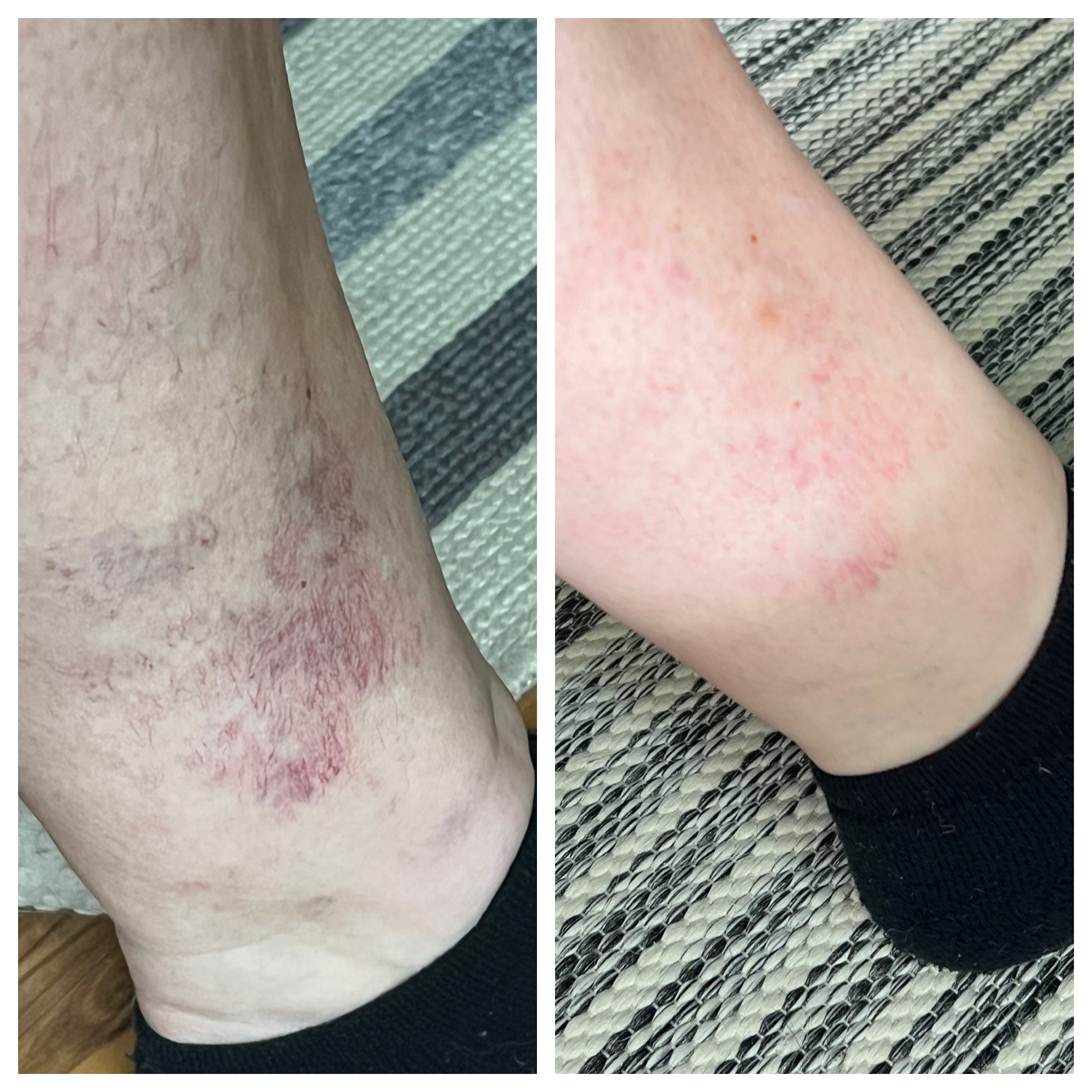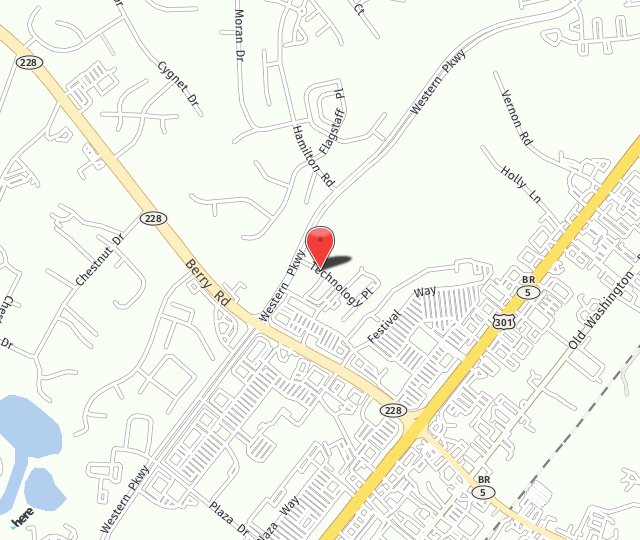What Are Spider Veins?
Spider veins are very small, twisted veins that you can see just beneath the surface of the skin. They are called spider veins because they often occur in localized groups that appear as a web or marbling of discoloration. This vein condition is generally not considered serious. Spider veins rarely lead to significant symptoms the way that varicose veins do. Nevertheless, there are reasons you may want to have spider veins treated. The primary reason is to eliminate the unattractive appearance of these veins. Once you have spider veins treated, you can reduce your risk of developing more in the future by elevating your legs at the end of each day, wearing compression stockings as needed, and increasing healthy physical activity that supports the optimal circulation of blood through the veins.
The team at Metropolitan Vascular Institute in Waldorf, MD is here to help you resolve the issue of spider veins as quickly as possible. Call (301) 374-8540 today to schedule your consultation for treatment!

What Do Spider Veins Look Like?
Spider veins, individually, are very small. However, these veins tend to occur in small to large groups, making the appearance quite noticeable. A group of spider veins looks web-like and may have discoloration that includes red, blue, and purple. These groupings of tiny veins often occur on the legs and ankles but may also be seen on the face, hands, chest, or other areas.
Who Gets Spider Veins?
Nearly any adult can get spider veins. While there may be a hereditary aspect to venous conditions, spider veins (and varicose veins) tend to occur more often in people who are relatively sedentary or who stand for long periods of time. For example, a grocery clerk who is on their feet several hours a day may have a higher risk of developing spider veins. Prolonged sitting and standing are strong factors that influence the development of visible, unhealthy veins. Additional factors include obesity, pregnancy, age, and gender. Due to the way in which certain hormones affect venous health, women, especially during pregnancy and perimenopause, are more prone to spider veins.
What Causes Spider Veins?
Spider veins are tiny capillaries, the smallest blood vessels in the vascular system. Capillaries sit just under the skin so are very visible when blood pools in them. Spider veins are capillaries in which blood has pooled due to malfunctioning valves. Just like larger veins in the body, capillaries have valves that open when blood pumps forward and close after the pump (in sync with your heartbeat). While scientific studies have identified the factors that relate to the development of spider veins, the exact cause of this condition is not fully understood beyond the fact that malfunctioning valves in certain veins allow blood to reflux and pool, resulting in visibility and other symptoms.
What Treatments Are There for Spider Veins?
There are two ways to address spider veins. One is through healthy lifestyle habits and the other is through clinical treatment. Even if you obtain treatment from a vein specialist, it is beneficial to develop habits that will reduce your risk of developing new spider veins in the future. At Metropolitan Vascular Institute, we treat spider veins with sclerotherapy and Endovenous laser treatment.
Sclerotherapy is the oldest and most common form of treatment for spider veins as well as varicose veins. The process involves injecting a sclerosing agent into each distended vein. The medication causes the inner lining of the vein to become sticky due to inflammation. The vein collapses and gets absorbed by the body.
Endovenous laser treatment also seeks to close off the malfunctioning veins. This procedure does so using a tiny catheter with a laser fiber attached to its tip. In this procedure, the controlled heat of the laser closes off the vein, allowing circulation to divert to nearby veins that are more functional.
Diagnosis and Treatment of Spider Veins
Spider veins, which are diagnosed through a physical examination of the patient, an analysis of symptoms and, sometimes, diagnostic ultrasound, can be treated in a number of ways, all of which are minimally invasive.
Compression Stockings
The simplest solution for treating spider veins is for the patient to wear compression stockings, which put pressure on the affected veins and promote blood flow back to the heart. This method is designed to control the symptoms of spider veins, not remove them.
Sclerotherapy
Sclerotherapy involves injecting a sclerosant, a solution designed to collapse them, into the veins. This procedure is performed in a doctor's office. Each treatment takes approximately one hour, and a typical patient requires two to four treatments.
Endovenous Laser Treatment
Endovenous laser treatment (EVLT), which is also called "laser ablation," consists of inserting a catheter with a laser probe attached to it directly into the vein. The laser heat seals off the damaged vein and diverts blood flow to healthier vessels.
The above treatments have fewer side effects, cause less pain and have shorter recovery times than traditional surgical-vein-removal procedures.
Who Is Candidate for Sclerotherapy?
Sclerotherapy treatment for spider veins is typically performed on patients between the ages of 30 and 60. Ideal candidates for sclerotherapy are those who are in overall good health and interested in eliminating the apperance of spider veins on their skin.
Patients who have a history of blood clotting or are currently pregnant or breastfeeding should not undergo sclerotherapy.
Who is a Candidate for Endovenous Laser Treatment?
Ideal candidates for endovenous laser treatment are those who have visible spider veins and are in overall good health. Candidates for laser treatment should not be currently suffering from a sunburn or have an underlying health condition that may cause complications when recovering from laser treatment. If you have an active infection or bacterial disease, we recommend waiting until these conditions are healed before you seek laser treatment. Laser treatment is also not recommended for those who are pregnant or breastfeeding.
Candidates for endovenous laser treatment should maintain realistic expectations of how their results will look like. They should also be able to commit to multiple laser treatment sessions, as mutliple sessions may be needed to achieve full elimination of the appearance of veins.
When Will I See Results from My Vein Treatment?
Results from sclerotherapy and endovenous laser treatment will both take a few weeks to become noticeable. For smaller spider veins, patients can expect to see visible lightening of the veins within three to six months. For larger veins, visible results may take three to four months to show.
How Long Will Results from My Vein Treatment Last?
All veins treated either with sclerotherpay or laser treatment are permanently gone forever, so the results you achieve from your vein treatment at the Metropolitan Vascular Institute will last a lifetime. However, it’s important to note that while our vein treatments help reduce the appearance of current veins, they are not an anti-aging treatment and cannot prevent the formation of new spider veins as time goes on and a patient naturally ages. Because of this, we are happy to welcome back all patients for a follow up treatment when necessary to maintain your desired results.
Prevention of Spider Veins
Although there is no sure way to prevent spider veins, making certain lifestyle changes may reduce the risk of developing them. Lifestyle changes include losing weight, exercising regularly, and wearing support stockings and comfortable, flat shoes. It is also important to move the legs frequently, especially during long periods of sitting or standing in one place.
Schedule Your Visit to Metropolitan Vascular Institute!
Our Waldorf, MD facility is staffed by a group of extraordinary vascular specialists, each of whom is committed to patient-centered care. To explore your treatment options for spider veins, contact us at 301-374-8540 to schedule your visit.

